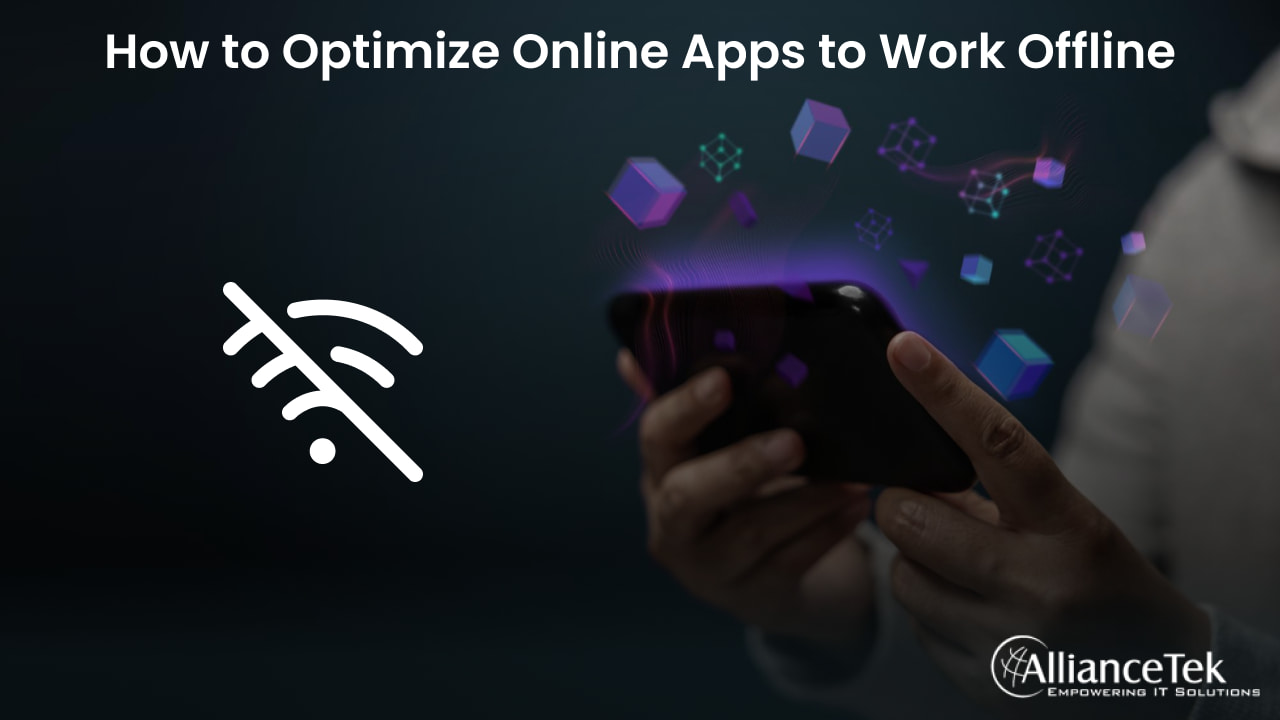Indeed, our reliance on mobile devices and online access has become a norm in today's world. However, there are still many situations where online access may be limited or unavailable. A prime example is when commuting on a subway or train where connectivity can be disrupted when the train enters a tunnel or underground station.
In such situations, users of online Mobile App Solutions become helpless and unable to access the content they need. This can be frustrating and inconvenient for those who rely on their mobile devices to stay connected and productive. As a result, developers must look for innovative ways to create applications that are not solely reliant on online access and can still function in offline mode. This approach will not only enhance the user experience but also ensure that the application remains functional in all scenarios, including areas with limited or no internet connectivity.

Reasons to Work on Offline Mobile Applications
Offline apps can be beneficial for a wide range of use cases. For instance, games and entertainment applications that do not require user data can function without an internet connection. Similarly, offline dictionaries, calculators, and language translators can be accessed without the need for an internet connection, making them a convenient option for users who may be in areas with limited connectivity.
On the other hand, online applications are necessary for real-time transactions that require immediate updates, such as banking or e-commerce applications. These applications rely on online connectivity to ensure that data is constantly synced and up to date. In such cases, it may not be feasible to use an offline app, as it may result in delayed or inaccurate data.
However, offline mobile application development can still store user data through caching, local storage, and a local database. This enables users to access their data and content even when they are not connected to the internet. Additionally, developers can use features like push notifications to alert users when new data or updates are available.
Overall, the choice between offline and online applications depends on the specific requirements of the application. Developers must consider factors like user data, real-time transactions, and connectivity limitations to determine which approach is best suited for their application.
Develop Mobile Applications with proper data storage option
Custom application development is heavily reliant on internet connectivity, which means that they can lose their functionality when the internet connection is lost. The app may still be accessible, but most of the actions and features that require internet connectivity will be unavailable. This can be frustrating for users who rely on these apps for productivity or entertainment.
Furthermore, mobile applications typically don't store a lot of data locally, as this would take up valuable storage space on the user's device. Instead, they rely on the cloud to store and retrieve data, which means that the app needs to be connected to the internet to access this data.
While this approach works well for apps that are primarily focused on real-time transactions or accessing cloud-based resources, it can be limiting for apps that require more offline functionality. In such cases, offline apps are a better fit as they are designed to store data locally and can function even when there is no internet connectivity. This is particularly important for apps that are designed for use in remote or rural areas where internet connectivity may be limited or unreliable.
Online/Offline Mobile Applications Development
Mobile applications have become an integral part of our daily lives, and most of them rely on an internet connection to function. However, there are situations when users lose their internet connection, resulting in a dead app that cannot function properly. In such cases, apps that have offline capabilities become extremely useful.
An offline app is one that can function independently of an internet connection, making it a valuable tool for users who may not have constant access to the internet. However, not all apps can function solely offline, especially those that require constant communication with a server or database to exchange data between the client and server. In these cases, a combination of online/offline app features is necessary.
The online/offline connectivity data syncing method is an effective way to ensure that an app remains functional even in the absence of an internet connection. This method allows data to be pulled into the app when there is internet connectivity, and any changes or edits made by the user are then pushed to the online database. When there is no internet connection, the data is cached locally, and the app continues to function normally, saving any edits made by the user locally. Once internet connectivity is restored, the app checks for any updates and then pushes the data to the online database.
The benefit of this syncing method is that the user can continue to use the app without error messages or interruptions. The app still has access to data, so it can continue to work offline. This is a useful system since users can be plagued with power failures, router troubles, or just bad signals.
Advantages of Online/Offline Mobile Apps
Allowing Mobile App Solutions to work offline with offline data syncing provides several benefits to users. First, it allows for uninterrupted use of the app, even when the user loses internet connectivity. This can be especially important in situations where a user may be in an area with poor signal or no signal at all, such as when travelling or in rural areas.
Additionally, offline data syncing can help to prevent data loss. In situations where a user loses connectivity, any changes or updates they make to the app can be stored locally on their device. When connectivity is restored, the app can then sync the local data with the online database, ensuring that no changes are lost.
Another benefit of offline data syncing is improved performance. When an app can store and access data locally, it can reduce the amount of time and bandwidth needed to access data from an online database. This can lead to faster app load times and smoother performance overall, even when internet connectivity is poor.
An example of using this online/offline connectivity data syncing approach may be a field service management application used by technicians who are constantly on the go and may need to access and exchange information to areas that may not have reliable Internet connectivity. With offline capability, the app can store critical data like work orders, customer information, and job schedules locally on the device. When an Internet connection is available, the app can sync the data with the central database, and any changes made by the technician can be reflected in real time.
In this way, the field service management app can ensure that technicians can continue to work efficiently, even in remote or low-connectivity areas, without any disruption to their workflow. The offline capability also provides a backup in case of any unexpected power or network outages, ensuring that data is not lost and that the work can continue uninterrupted.
Conclusion
Optimizing online apps to work offline can provide numerous benefits to users, such as improved user experience, increased accessibility, and reduced data usage. To achieve this, developers need to consider several factors, including designing for offline functionality, caching data, implementing synchronization techniques, and optimizing app performance.
Designing for offline functionality involves identifying and prioritizing essential features and data that users need even when they are not connected to the internet. Caching data allows users to access previously downloaded content even when offline, while synchronization techniques help keep the app up-to-date with the latest changes and updates when online.
Finally, optimizing app performance is crucial to ensure a seamless offline experience. This can be achieved through techniques such as reducing network requests, minimizing the app's resource usage, and optimizing app code.
By implementing these strategies, developers can create online apps that are optimized for offline functionality, providing users with a better overall experience and increasing the app's usability and accessibility.
Call us at 484-892-5713 or Contact Us today to know more details about How to Optimize Online Apps to Work Offline


